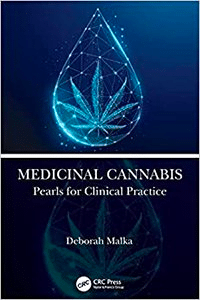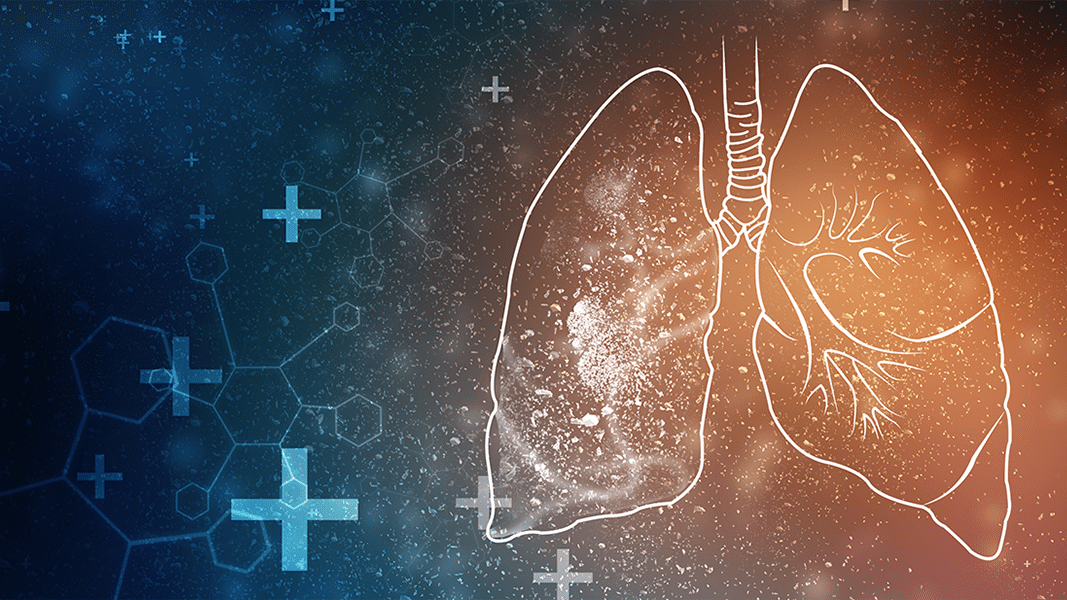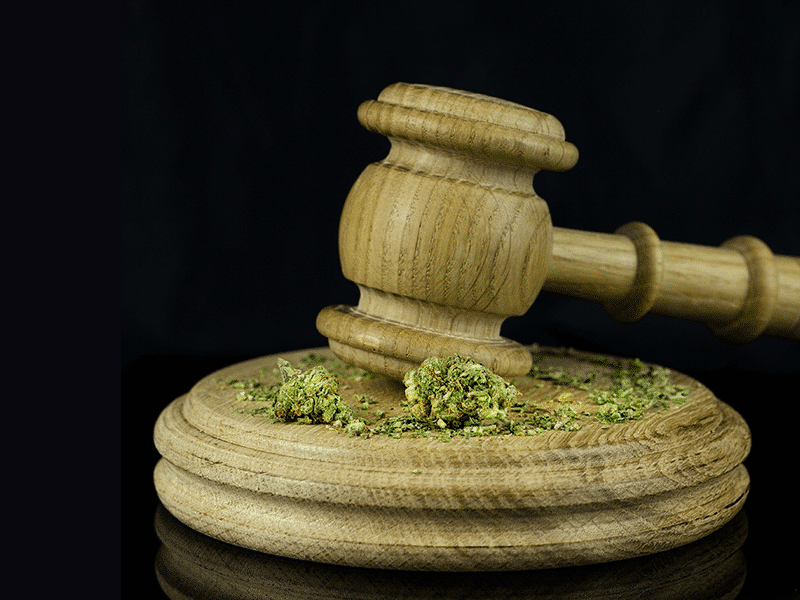Cannabis has historically been used as a treatment for asthma dating back to the 1800s, indicating benefits as well as risks for this population of patients. Although smoking in general is not a good idea for anyone with asthma, smoking cannabis has not been found to be as harmful as anticipated.

A 2006 case-controlled study of 1,200 participants demonstrated that even heavy cannabis smoking is not associated with lung cancer and other types of upper aerodigestive tract cancers. This finding was corroborated by a subsequent report in the International Journal of Cancer, which concluded: “Results from our pooled analyses provide little evidence for an increased risk of lung cancer among habitual or long-term cannabis smokers.”
A review of the scientific literature found that short-term cannabis smoking is associated with bronchodilation. In the 1970s, cannabis was shown to cause a reversal of exercise-induced asthma and hyperinflation. Initial reports of an association between long-term cannabis smoking and increased respiratory symptoms suggestive of obstructive lung disease were later shown to be unsubstantiated.
It is important to consider that cannabis may be a precipitating factor for acute asthma and allergic attacks. Several papers have shown a relationship between marijuana use and an increase in asthma and other allergic diseases symptoms, as well as the increased frequency of medical visits.6But this applies only to smoking cannabis and has not been shown for alternative delivery methods.
Breathing Easy
Tetrahydrocannabinol (THC) has long been known to be an effective bronchodilator. This was demonstrated in a 1978 study of human subjects at low doses, 100–200 µg, delivered by aerosolized inhaler. Maximum improvement was seen at approximately 60 minutes and was sustained for at least 3 hours, with improvement of forced expiratory volume lasting for more than 6 hours after dosing.
While most studies on cannabis and asthma have focused primarily on the bronchodilatory effect, some have also observed a reduction in bronchial inflammation. This is not surprising given that cannabinoids are well-known for their anti-inflammatory effects. Recent large studies have shown that, instead of reducing forced expiratory volume and forced vital capacity (FVC), cannabis smoking is associated with increased FVC. The cause of this is unclear, but acute bronchodilator and anti-inflammatory effects of cannabis may be relevant.
A 2014 report in the British Journal of Pharmacology proved that this effect is mediated by the endocannabinoid system. Activation of CB1 cannabinoid receptors inhibits bronchomotor tone. And CB2 receptors are thought to be involved in mechanisms for neurogenic inflammation acting through the sensory nerves, thus having potential therapeutic value for allergic asthma.
THC & CBD
Both THC and cannabidiol (CBD) are anti-inflammatory and muscle relaxant. But contrary to the many health claims for the value of CBD, it is not a bronchodilator. A study of the effect of several cannabinoids on pulmonary function (in animals) showed significant differences between them. THC and tetrahydrocannabivarin (THCV), for example, inhibited induced tracheal contractions, whereas CBD did not. THC also performed better than CBD in suppressing cough. Some researchers have suggested that a combination of CBD and THC may decrease swelling in the lungs and help to open the airways in people with chronic obstructive pulmonary disease (COPD).
Smoking anything, of course, poses a risk for those with respiratory disease. A survey of tobacco and cannabis smokers found that cannabis smokers had no more COPD or respiratory symptoms than non-smokers, but that smoking both tobacco and cannabis increased the risk of respiratory symptoms and COPD.
Vaporizing is a preferred method of delivery as it provides direct medicinal action to the lungs upon inhalation without noxious smoke. Findings from the few studies that attempt to isolate the respiratory risk associated with vaporizers all demonstrate some level of benefit. A 1975 report indicated that inhaling high (20 mg) doses of nebulized THC could be irritating to asthmatic subjects. Conversely, the acute effects of vaporized cannabis on airway function in adults with advanced COPD showed no harm; again, high doses were used. In another study, the effect of 35 mg of vaporized THC-rich cannabis showed no positive or negative effect on airway function, exertional breathlessness, and exercise endurance in adults with advanced COPD.
It’s possible that vaporized cannabis might have a salutary effect on breathlessness and exercise performance in symptomatic patients with COPD. There needs to be more research in this area. Larger randomized clinical trials are needed with a broader study population that includes symptomatic patients with less advanced COPD.
Cannabis itself can provide increased benefit above and beyond the effects of the cannabinoids, due to the selection of cultivars with specific terpene content. For example, α-pinene aids in bronchodilation and β-myrcene aids in muscle relaxation. Vaporizing whole plant cannabis flower with appropriate terpene profiles may yield the most positive results.
Selected Patient Reports
Patient A: A 36-year-old male with asthma, already a medical cannabis patient for one year, reported that vaporizing a full flower “sativa” hybrid strain twice a day allowed him to discontinue Advair. He was still taking Singulair daily with rare use of an albuterol inhaler. He preferred cannabis to Advair as he was a proponent of natural medicines. He stopped tobacco one year prior, so the decreased need for Advair may have been due to improved pulmonary function. At our last visit, I advised seeking a strain rich in α-pinene as the effect of terpenes was now becoming more well-known.
Pearls: One might surmise that cannabis replaced Advair in this patient, although his condition likely improved due to stopping tobacco. It’s not clear to what extent vaporizing cannabis was helpful in making that transition. I have not found it prevalent that vaporizing a small amount of cannabis, twice/day, is as effective as pharmaceuticals in most asthma patients.
Patient B: A 72-year-old female with severe asthma and significant back pain due to scoliosis and adult-onset diabetes, was new to cannabis use. Her medications included Singulair, Spiriva, Arcapta, Pulmocort, and Brovana nebulizer for her asthma, as well as diabetes medicines, but no pain medicine. She reported that spinal injections were no help for back pain. She had been using a cane to ambulate for 5 years, due to the curvature of her spine, which caused pain in her shoulder. She started on a CBD/THC 1:1 tincture, 10 mg used every night and sometimes during the day. There was no change in her medications, but her back felt better. She continued on this dose for several years and also added topical for joint pain. Her asthma medications remained the same.
Pearls: This patient was in significant pain, yet wanted to avoid opiates due to their negative effect on her impaired respiratory system. She found relief with cannabis, at no risk to her advanced asthma. Unfortunately, her asthma did not improve, but it was not aggravated by this non-smoked cannabis therapy.
Patient C: A 74-year-old female, who presented with insomnia, hypertension and COPD, had been using cannabis for the past several years as a medical cannabis patient. She had a history of tobacco use, but had stopped 5 years ago. She was also on multiple inhalers, including Spiriva, Asmanex, and nebulizers. I advised her to use cannabis by tincture or edible, about 5 mg 2×/day, which allowed her to discontinue Trazodone and Diovan. She said the blood pressure medicine contributed to “gasping for air” and she felt better off of it.
Pearls: This case is an example of a patient with COPD who can benefit from cannabis. In cases with COPD, we do not expect to see much positive or negative effect on pulmonary function with cannabis use. This patient was able to discontinue medicines for hypertension and insomnia, but not for COPD, although relaxation and better sleep were contributing to a better quality of life.
Cannabis Therapy Summary
Cannabis delivery for respiratory disease must be chosen judiciously. While tinctures and edibles pose no risk, it is possible that certified cannabis free of mold, pesticides, and solvents delivered through a full flower vaporizer would be most efficacious for such patients. On the rare occasion that a patient was using cannabis primarily for asthma relief, my advice was to vape full flower from an α-pinene-rich strain. I actually ask patients to smell the flowers at the dispensary and choose a pine scented one.
Vaporizer pens should be avoided because the oil extracts tend to be deficient in terpenes and because not all brands are free of petrochemical residue. There are some new inhalers in a metered dose form, containing cannabis and selected terpenes that have recently become available. Those with α-pinene would be excellent for treatment of asthma, as they would be bronchodilating. A cannabis inhaler has been marketed that contains 6.5-7 mg THC and 1–2 mg of terpenes in each dispensation. When aerosolized inhalers become more widely available, these would be my first choice for asthma relief.
Cannabis is not ordinarily utilized to treat COPD, but it is good to know that it not only does not harm patients with COPD, but may actually increase their forced vital capacity (FVC). In some cases, the muscle-relaxant properties of cannabis, especially cultivars with β-myrcene, can bring relief to chest wall and diaphragmatic spasms. Typically, THC-rich cannabis is indicated for bronchodilation, yet CBD-containing products will also aid in muscle relaxation and decrease inflammation in cases of atopic respiratory disease.
This article is adapted from Medicinal Cannabis: Pearls for Clinical Practice by Dr. Deborah Malka with permission from CRC Press, an imprint of the Taylor & Francis Group. Copyright © 2022, Deborah Malka MD PhD. Malka is a holistic physician with certification in Integrative Holistic Medicine. Prior to clinical practice, Dr. Malka completed her PhD in Human Genetics from Columbia University, and studied both natural and traditional medicine, with degrees from the University of New Mexico School of Medicine and the Santa Fe College of Natural Medicine.
Recommended Readings
Cannabis Awakening: A Matter of Life or Death
A former judge discusses his transformation from ardent prohibitionist to medical cannabis advocate.
Medicinal Terpenes
Aromatic plant compounds reduce pain and stress, boost brain health, fight cancer and antibiotic-resistant bacteria, and more.
The Vaping Crisis: One Year Later
Scientists identify synthetic cannabinoid adulterants in CBD vape oil cartridges, warn of “devastating toxicological consequences.”




